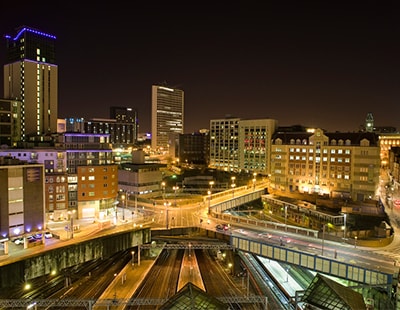With an urgent need to build significantly more new homes, competition is hotting up for land which is deemed suitable for residential development, especially in the UK’s leading regional cities, which largely explains why land values are now increasing faster than house prices across many parts of the country.
Strong demand has also helped to ensure that land values in central London have stabilised following significant declines last year, fresh figures from the Savills residential development land index has revealed.
The latest research shows that land buyers have focused primarily on well-connected urban sites as developers and investors seek opportunities for property price growth beyond London.
Birmingham, Manchester and Glasgow have seen the highest residential land price growth as Build to Rent, urban regeneration and infrastructure improvement initiatives boost demand.
Residential land values increased by 15% year-on-year in these cities, compared to house price growth of between 6.3% and 9.4%, figures from Savills show.
High demand means that previously overlooked sites are being considered by developers, with competition for land in these three cities underpinned by significant and rising housing shortfalls.
Detailed analysis by Savills over the past 18 months suggests that Birmingham needs 89,000 new homes by 2031, while Glasgow’s shortfall could reach 11,000 by 2021, Manchester 10,000.
Across the UK as a whole, urban land values rose by an average of 1.8% in the first three months of this year and 4.4% compared with the first quarter of 2016. Greenfield land values increased by just 0.4% and 1.3% in the same periods.
Activity levels and pricing in the central London residential land market reflects continued weakening of values in the new homes market, particularly in the fully supplied £1,000 per sq ft prime market.
Falling housing starts in prime central London have reduced demand for land in zone 1, but there are signs that land values are finding their level, with home prices having edged 0.1% higher over the six months to the end of March 2017, which is a major improvement on the 8.9% decline witnessed in the six months to the end of September 2016.
Property prices in prime central London have been falling since the major stamp duty overhaul in December 2014, with prices now 10.5% below that level, but still 18.7% above the level recorded a decade ago.
By contrast, a chronic shortage of new homes at a lower price point is translating into strong demand for land in zones 2-6.
Savills estimates that the undersupply of new homes in the sub £700 sq ft market in the capital will likely increase by around 28,500 a year for the next five years at least.
Crucially, funders are ready to support developments below £1,000 sq ft and the Build to Rent sector is also active below this level.
Lucy Greenwood, Savills residential development research analyst, said: “Key regional cities are outperforming other locations meaning the pattern of price growth across the UK’s residential market is not dissimilar to the house price growth map.
“Higher end housebuilders, such as Crest Nicholson and Berkeley Homes, have been seeking development opportunities beyond the South East. There is still interest for sites in the capital’s central zone, however, from international bidders able to exploit the currency advantage and we are also seeing international investors partnering with local developers, where land owners are ready to take a hit on the price they’d have achieved a year ago.
“Competition for land in zones 2 to 6 is coming from all types of developers from UK housebuilders to niche developers.”










.png)









Join the conversation
Be the first to comment (please use the comment box below)
Please login to comment